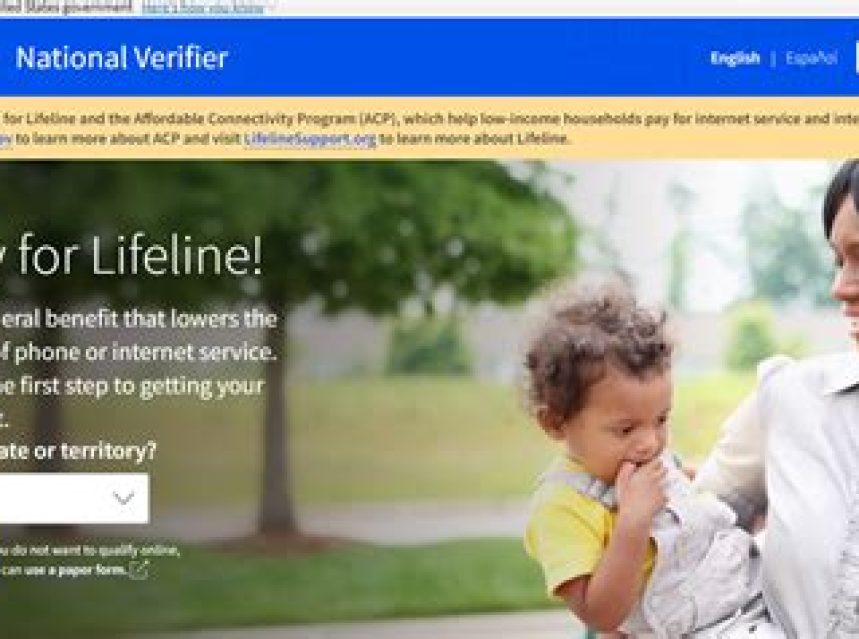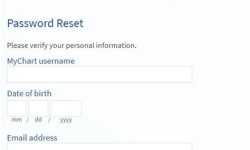Lifeline National Verifier Application Form

The Lifeline National Verifier is a crucial tool for individuals seeking to access the Lifeline program, which provides a discount on monthly phone or internet service for eligible low-income households. In this blog post, we will guide you through the process of accessing and completing the Lifeline National Verifier application form.
First, we will explain what the Lifeline National Verifier is and its significance in the application process. Next, we will provide step-by-step instructions on how to access the verifier and navigate through the application. We will also discuss common errors to avoid when completing the application form to ensure a smooth and successful submission.
Finally, we will delve into the result of the Lifeline National Verifier process, shedding light on what to expect after submitting your application. Whether you are new to the Lifeline program or seeking to renew your eligibility, this blog post will equip you with the necessary information to navigate the lifeline national verifier application process effectively.
What is the Lifeline National Verifier?
The Lifeline National Verifier is a program that was launched by the Federal Communications Commission (FCC) to ensure that only eligible low-income consumers receive the benefits of the Lifeline program. This verifier crosschecks consumer-provided information with multiple government databases to verify the eligibility of the applicants.
It helps to prevent duplicative or fraudulent enrollments, making the process more efficient and reducing the potential for errors. With this program, the FCC aims to maintain the integrity of the Lifeline program and ensure that it reaches those who truly need it.
Essentially, the Lifeline National Verifier serves as a safeguard to maintain the effectiveness of the Lifeline program, which provides discounted phone service to eligible low-income consumers.
By implementing this verifier, the FCC is taking proactive steps to address potential abuse and misuse of the Lifeline program, thereby ensuring that it continues to serve its intended purpose of connecting low-income Americans to vital communication services.
How to access the Lifeline National Verifier
The Lifeline National Verifier is a program that helps low-income individuals access discounted phone and internet services. In order to take advantage of this program, you must first determine if you are eligible. The first step is to access the Lifeline National Verifier website, where you can easily check your eligibility.
Once on the website, you will be asked to provide some personal information, such as your name, address, and Social Security number. It is important to ensure that the information you provide is accurate and up-to-date, as this will determine your eligibility for the program.
After submitting your information, the Lifeline National Verifier will process your application and determine whether or not you qualify for discounted phone and internet services. If you are found to be eligible, you will receive further instructions on how to access these services.
It is important to note that accessing the Lifeline National Verifier is just the first step. Once you have been approved for the program, you will need to follow additional instructions in order to actually receive the discounted services.
Completing the Lifeline National Verifier application
Completing the Lifeline National Verifier application involves providing accurate and complete information in order to successfully apply for the Lifeline program. It is important to carefully follow the instructions and ensure all necessary documents are included with the application.
Applicants will need to provide personal information such as full name, address, date of birth, and Social Security number. It is crucial that all information provided is up to date and accurate to avoid any delays or issues with the application process.
Additionally, applicants will need to provide documentation to verify their eligibility for the Lifeline program. This may include proof of income or participation in qualifying government assistance programs.
Once the application is submitted, it will be reviewed by the Lifeline National Verifier to determine eligibility. It is important to ensure that all information is truthful and accurate to avoid any discrepancies that may lead to rejection of the application.
Common errors to avoid in the application form
When completing the Lifeline National Verifier application, it’s important to be aware of the common errors that applicants should avoid. One of the most frequent mistakes is providing inaccurate or incomplete information. This can lead to delays in the application process, or even rejection of the application. It’s crucial to carefully review all the information provided before submitting the application to ensure its accuracy.
Another common error is failing to provide the necessary proof of eligibility. The Lifeline program has specific eligibility requirements, and applicants must provide documentation to support their eligibility. Failure to do so can result in the application being denied. It’s important for applicants to carefully review the requirements and ensure they have all the necessary documentation before submitting their application.
Additionally, many applicants make the mistake of not keeping track of their application status. It’s important to regularly check the status of the application to ensure that it is being processed and that no additional information is required. Failure to do so can result in missed deadlines or overlooked requests for additional information.
Finally, one of the most common errors is not seeking assistance when needed. The Lifeline National Verifier application process can be complex, and many applicants may benefit from seeking guidance or support. There are resources available to help applicants navigate the application process and avoid common errors. Whether it’s accessing the Lifeline Support Center or seeking assistance from a representative, applicants should not hesitate to seek help when needed.
The result of the Lifeline National Verifier process
After completing the Lifeline National Verifier application, applicants can expect to receive a notification regarding the result of the process. The result could be in the form of approval or denial of the Lifeline assistance. Upon approval, applicants will receive confirmation of their enrollment in the program, along with details on the specific benefits they are eligible for. On the other hand, if the application is denied, the notice will include the reasons for the denial and information on how to appeal the decision.
It’s important for applicants to provide accurate and up-to-date information in their application to increase the chances of a successful outcome. Any discrepancies or errors in the application can lead to delays or denials. Additionally, applicants should regularly check the status of their application to stay informed about the progress and any updates.
For individuals who receive an approval, it’s essential to understand the responsibilities that come with the Lifeline program, such as annual recertification to maintain eligibility. On the other hand, those who are denied can explore the option of appealing the decision by providing additional documentation or clarifying any discrepancies.
Overall, the result of the Lifeline National Verifier process can greatly impact individuals who rely on the program for essential communication services. It’s crucial for applicants to be proactive in ensuring the accuracy of their application and understanding the potential outcomes of the verification process.
Frequently Asked Questions
What is the Lifeline National Verifier?
The Lifeline National Verifier is a system used to determine an individual’s eligibility for the Lifeline program, a federal program that provides discounted phone and internet service to low-income households.
How to access the Lifeline National Verifier?
You can access the Lifeline National Verifier through an online application portal or by contacting a participating phone or internet service provider.
Completing the Lifeline National Verifier application
When completing the application, you will need to provide personal information, such as your name, address, and proof of eligibility, such as income or participation in certain federal assistance programs.
Common errors to avoid in the application form
Common errors to avoid include providing incomplete or inaccurate information, failing to include required documentation, or submitting multiple applications.
The result of the Lifeline National Verifier process
The result of the verification process will determine your eligibility for the Lifeline program. If approved, you will receive a notification and instructions on how to proceed. If denied, you will be provided with an explanation and an opportunity to appeal the decision.



